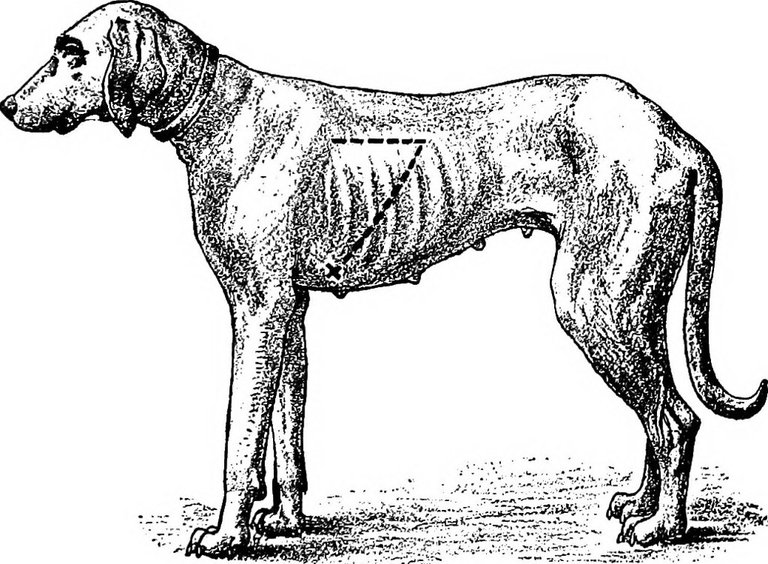The Strong Effect of Canine Distemper in Dogs.
Canine distemper is a highly infectious viral disease of dogs occurring worldwide. It is a paramyxovirus closely related to the virus of measles and rinderpest. The main path of transmission is through aerosol droplet secretions from an already infected animal, some dogs even have the capacity to shed virus particles for several months.

Image source
Canine distemper is highly contagious, the causative virus attacks the gastrointestinal, respiratory, and nervous systems of puppies and adult dogs. The virus can also be found in wildlife like; coyotes, raccoons, foxes, wolves, and skunks.
Dogs most likely get infected through airborne exposure to the virus from an infected dog or an affected wild animal. The sharing of equipment amongst dogs, and the sharing of water bowls can cause greatly the transmission of the virus
Even newborn dogs can still get the virus passed down to them through the placenta of their mothers.
While all dogs are at risk of the virus, puppies that are younger than four months, and have not been vaccinated against canine distemper, stand a high chance of getting the disease.

Image source
After exposure to the virus, a transient fever occurs which usually takes 3-6 days after the infection, this may be followed by leukopenia, with clinical signs that may go unnoticed or may also be accompanied by anorexia. The fever feeling subsides for some days before a second fever happens, and with this may come a serious nasal discharge, lethargy, mucopurulent ocular discharge, and anorexia.
After this, GI and respiratory signs, which typically get complicated by secondary bacterial infections will follow. On rare occasions, pustular dermatitis may also be observed. When a dog survives the acute phase, he may develop hyperkeratosis of the footpads, and epithelium of the nasal planum, alongside enamel hypoplasia in incomplete erupted teeth.
When the illness takes longer, it comes with neurological signs, but there is no certain way to anticipate if an infected dog will develop neurological manifestations. Typical neurological signs include;
- Seizures, which include chewing movements of the jaw, and salivation.
- Localized involuntary muscle twitching. Other neurological signs include; nystagmus, head tilt, paresis to paralysis, seizures that range from focal to a generalized one, and circling.
It is possible for veterinarians to diagnose canine distemper through laboratory testing and clinical appearance. There is no current cure for canine distemper infection, but managing the symptoms with treatments will consist of supportive care to prevent secondary infections. The moment a dog is infected with canine distemper, it should immediately be separated from other dogs in order to minimize the risk of further infection.
Treatment options like; Antibiotics to help protect dogs that have weak immune systems, IV fluids, food that is easy to digest, anti-seizure medications, and humane euthanasia for severe cases.
In order to prevent canine distemper, vaccination is highly crucial;
Humans must avoid contact with wildlife and infected animals.
Pet ferrets should be vaccinated against canine distemper.
Caution should be applied when socializing with puppies or unvaccinated dogs.
Stay up to date with immunization schedule and distemper vaccination should be kept up to date.
On a general note, dogs would shed the virus through bodily secretions for about a month, with an exact timeframe of about 2 weeks- 3 months. But, in some cases, especially when the dog shows neurological signs, it may continue to shed the virus for as long as 6-8 months too.
References.
msdvetmanual.com/generalized-conditions
vet.cornell.edu/departments-centers
Thanks for your contribution to the STEMsocial community. Feel free to join us on discord to get to know the rest of us!
Please consider delegating to the @stemsocial account (85% of the curation rewards are returned).
Thanks for including @stemsocial as a beneficiary, which gives you stronger support.